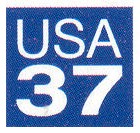 The Catalog of United States Personalized Postage
The Catalog of United States Personalized Postage
The Catalog of United States
Customized Postage
by Charles M. Gore, Otto E. Bergman & Joann Lenz
Customized Postage by Stamps.com, Endicia, Zazzle.com, Pitney Bowes and other vendors
The intent of the catalog is to provide a means of classifying Customized Postage stamps which are used for delivery of the mail. These stamps may be purchased from approved vendors, and found in lots and mixtures often sold by collectors or dealers. The catalog is free, html web based and is available to anyone at www.ephemera4u.com.
Catalog Features:
· A catalog numbering system that will number all major and minor varieties.
· A stamp identifier that works for reverse lookup as well as assigning numbers.
· Information on the history, rarity, and varieties of the issues to date.
· Click-on links for reference tables and specific information on the cataloged stamp.
· Click-on stamp thumbnails to provide 300 dpi enlargements.
Listing Criteria:
· The stamp is produced by an approved USPS vendor.
· The stamp has a personal image, business theme or vendor supplied image / design.
The catalog started as a result of multiple emails over several months in early 2008 between the authors and Dave Crotty. Each person recognized that the history and development of this new area of philately was being lost to time and memory and that a comprehensive catalog was a necessity. The email conversations accentuated each person's particular area of expertise and interest in addition to their general interest in Customized Postage.
Charles M. Gore, a retired engineer and long time collector of stamps and coins, focused on devising the catalog numbering system. The creation of the catalog numbering system posed many problems as there was no definitive way to determine what had been produced. This was due to the propriety nature of the new postage and the need to keep sales and production techniques confidential during the trial periods and the fact that not all variations offered for sale were known to be sold. To overcome this problem, Charles purchased thousands of used stamps, consulted with the co-authors and examined offerings from dealers and collectors. These stamps revealed many surprises as well as provide a good overview of the stamps available to collectors.
The numbering system he devised is one that mirrors the methodology of coin collectors who collect by die varieties. The catalog number is created by a series of numbers and letters to describe the stamp attributed in greater detail as the number is expanded. This system allows one to create the catalog number in as great a detail as one desires. In this system, a partial number can be as useful to a collector as a completely detailed number.
An example of this idea familiar to most would be State Quarters. State Quarters can be collected by year; by year and mint mark; by year, state, and mint mark or by year, state, mint mark and condition. This choice is up to the collector. While such coins can easily be listed in a table or column format, such a luxury is not possible with Customized Postage due to the many known and unknown varieties that have been created.
The numbering system works as follows: The first two letters refer to the vendor: ZA for Zazzle. Next is a number that specifies the basic design format that includes size and orientation. The next letter specifies the rate period; for example A is the 37 cent first class postage rate period. B is the 39 cent rate period. The next number specifies the characteristics of the stamp including printing variations that were made during a specific rate period. Following this is a letter representing the denomination as selected from a rate period table.
A number such as ZA2A3a is used to describe a Zazzle stamp, 39 x 64 mm in size with portrait orientation created during the 39 cent rate period. It is the third type listed in the catalog and has a denomination of 24 cents. Additional information can be added by expanding the number further.
The use of this system allows a collector to classify and create a catalog number for stamps in his collection. The system allows for the easy addition of new varieties without the need to revise the current listings. In addition, the number can be deconstructed as was done above. The catalog also has a reverse lookup feature to speed the process.
Otto E. Bergman (AKA WGP), a well known author about personal postage, has been instrumental in proofing the data presented in the catalog. His knowledge and guidance during the catalog numbering has averted many pitfalls. Otto has extensive research and documentation of corporate history that has been acquired from public and private sources. Explanatory and informational links are being added to types in the manner he feels most appropriate. He is also providing images of special stamps and full sheets from his own personal collection. This work had to wait until the basic catalog types had been determined.
Joann Lenz, author,
researcher, collector and APS Director, has concentrated on the actual
physical documentation of most new issues. From the very first day of
PhotoStamps by stamps.com, Joann has purchased and used in the
mails many of the major types provided by known and obscure vendors.
Joann has extensive documentation regarding her purchases including
scans of individual stamps as well as full sheets. She is also providing
data, commentary and images to accompany the basic catalog type.
The catalog is an ongoing project. Stamps produced by Pitney Bowes should be completed by the end of September 2010. A complete revision of the stamps.com listings will follow to bring them into compliance with the new listing format.